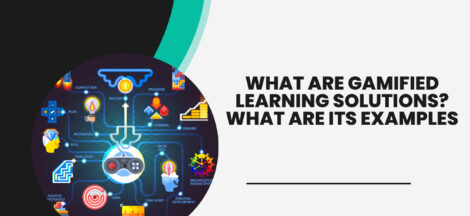The popularity of eLearning is growing at an astonishing rate. During the Coronavirus pandemic, it has become the safest and most efficient form of education. According to Forbes, the global virtual learning market will reach $325 billion by 2025.
In this article, you will learn why online education is better than traditional on-campus one.
1. Affordability
The traditional college provides students with unforgettable experiences, from dorms to large academic buildings packed with classrooms. While that is an opportunity to connect with new people and broaden your horizons, on-campus experiences come at a high cost. It includes:
- Tuition
- Registration fees
- Room and board (housing and meals)
- Textbooks and supplies
- Personal expenses
- Transportation
Taking an online course is more affordable but make sure to enroll in top online learning platforms. All course materials are presented online and can be downloaded or consumed via an e-reader at a far lower price.
Sure, just because online education is more affordable does not mean it is free. For example, students still need to prepare to cover tuition and fees. While some fees are obligatory, others are optional. Other expenses include labs, clinical courses, exam proctoring, and assessment for course-level placement.
Affordablecollegesonline.org calculated annual costs for an actual school in Florida that offers both offline and online programs. They found that the cost of on-campus education is $42,768, while the cost of eLearning is $21,100.
2. Greater Availability to Global Students
Technological advancements have made college education more accessible than ever. Most schools see the growth opportunity in technologies, such as the cloud and fast internet. That way, students can access the desired classes, irrespective of their location. In 2013, Georgia Tech became the first school to offer a MOOC-based degree program.
Today, prestigious universities, including Oxford, Stanford, Imperial, Harvard, and MIT, offer MOOCs (Massive Open Online Courses). These courses have the same educators and study materials as offline ones. Students can communicate with professors, send assignments, and connect with peers.
Additionally, there is a wide range of schools that teamed with eLearning platforms like Coursera or Udacity to offer MOOC-based degrees.
For global students, that is the opportunity to get a degree from a renowned school. Advanced technologies allow them to attract global students and gain a competitive advantage in the fierce education sector.
3. Adding Flexibility to the Learning Process
In traditional education, students’ location is a key deciding factor. Instead of choosing schools and courses they like, students usually pick those in their vicinity. That limits their choices and often prevents them from acquiring skills they are passionate about.
On the flip side, online learning eliminates geographical limits. Students can choose the desired schools and courses, no matter if they live in Australia, Japan, or Italy. Most importantly, they can combine skills and training programs to personalize learning experiences. No matter if you are looking to earn a college degree or improve your weightlifting skills by watching instructional videos, you will find what you are searching for online.
4. Improved Learner Engagement and Information Retention
According to surveys, online learning raises information retention rates by up to 60%. On the other hand, the retention rate in traditional classroom settings is only 8-10%.
These statistics are not surprising, given that students learn at the same pace. On the other hand, eLearning is highly personalized. All learning materials are in the cloud, meaning students can access them anytime and anywhere. Most importantly, the process adapts to their learning pace. For example, the majority of cloud-based languages use adaptive learning.
For example, the founders of ScootPad focused on the fact that not all students understand every concept at the same pace. They created a learning platform that uses real-time technologies to help learners with assignments, tests, and overall comprehension.
Most importantly, all learning materials are kept online, on the cloud. That is a chance for students to access, re-read, or skip course materials, focusing on what matters to them.
5. Improved Networking and Communication
Online education programs usually offer a wide array of networking and collaboration options. Apart from back-and-forth emails, students can also access discussion boards, live chat, and forums, where they can connect, exchange ideas, provide help, and ask questions. That way, students from all around the world can communicate effortlessly. Most importantly, that is a chance for them to gain cross-cultural experiences.
Online Education Benefits Both Students and Schools
In the next few years, we will witness the rapid evolution of online education. Its major benefit lies in greater flexibility, affordability, and convenience. eLearning finally gives the students to choose schools and courses based on their passions and preferences, not location.
Of course, those are just some of the numerous benefits of skipping the traditional classroom settings and shifting to eLearning.
Which type of education do you prefer? Please, share your top reasons and experiences with us!
Suggested:
5 Benefits of Social Learning Network.




 Proven Tips for Writing Video Marketing Scripts for an Online Business
Proven Tips for Writing Video Marketing Scripts for an Online Business
I just loved the 5th reason in this blog. The importance of networking and communication is immense in education.